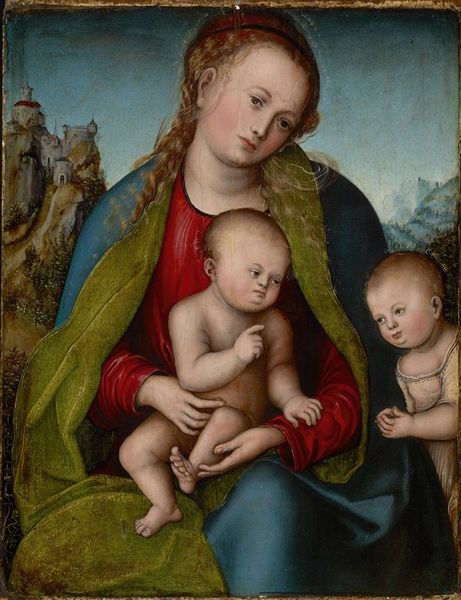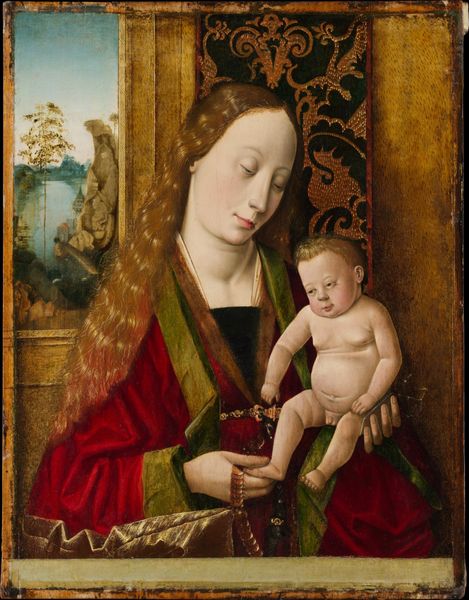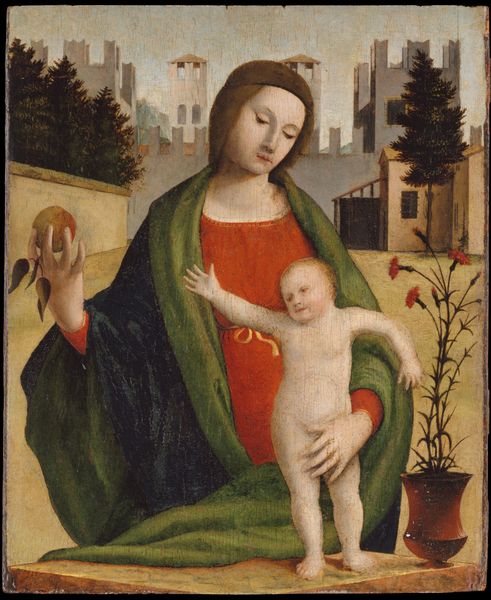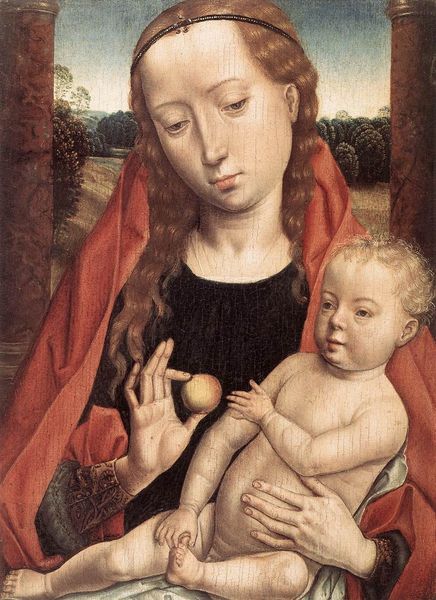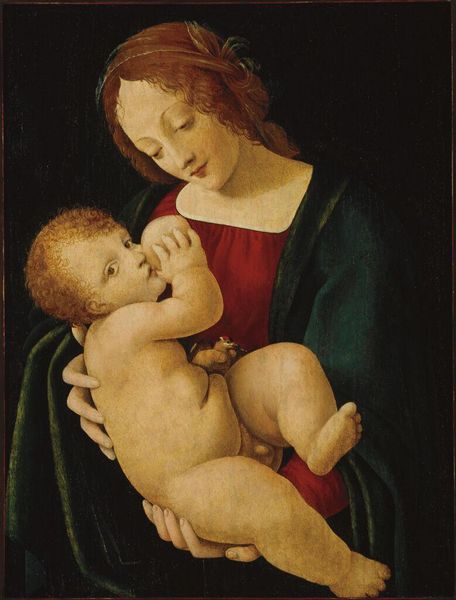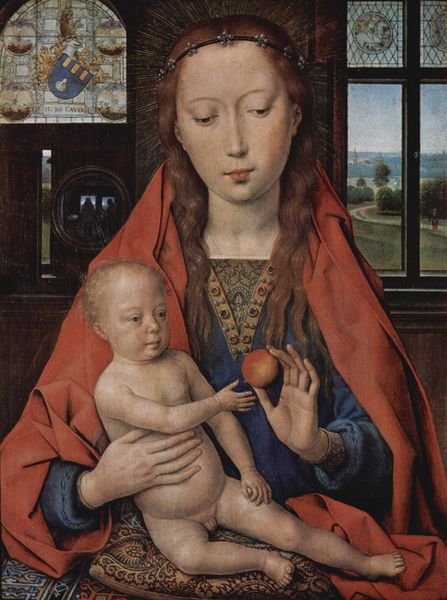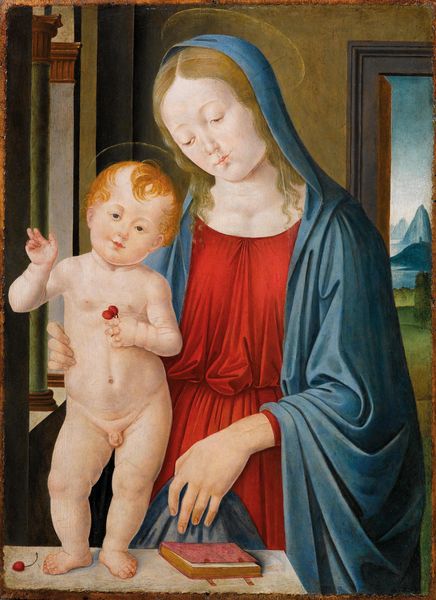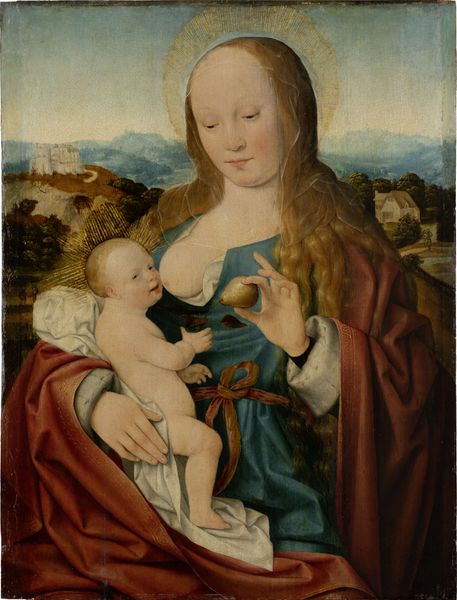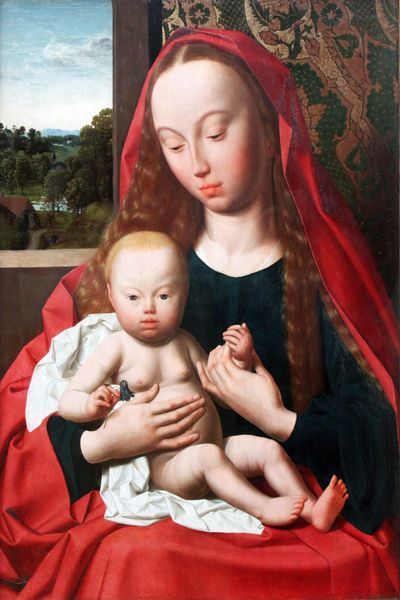
Madonna and Sleeping Child (Madonna of the Veil) 1515
0:00
0:00
ambrogiobergognone
Palazzo Brera, Milan, Italy
painting, oil-paint
#
portrait
#
painting
#
oil-paint
#
oil painting
#
history-painting
#
italian-renaissance
#
portrait art
Copyright: Public domain
Curator: This is Ambrogio Bergognone's "Madonna and Sleeping Child," also known as "Madonna of the Veil," an oil painting from around 1515, now hanging in the Palazzo Brera. Editor: Immediately, I'm struck by the duality present—the Virgin's melancholy gaze and careful hand juxtaposed against the almost carelessly rendered sleeping baby. There's tension. Curator: The technical rendering really supports that tension. Note how Bergognone uses oil paint to meticulously depict the Virgin's robes—the way the green drapes and falls is a testament to material mastery. What does this say about wealth and power? Editor: Exactly. And how does it reinforce the image of women in power during the Renaissance? It emphasizes domesticity, the pressure for reproduction to maintain familial control of property and power. What does this tender moment tell us about Renaissance patriarchy? Curator: That contrast extends into other details of this piece, of course. Bergognone places the figures in front of a dark curtain but opens to the right, depicting life and activity. This provides some balance to that heavy darkness. The veil is gossamer thread—it is almost transparent. I am fascinated by how the curtain functions both as background and subject matter, acting as a repoussoir. What message is being sent by showing Mary holding the fine, barely-there thread? Editor: It can be seen as representative of her connection with her child: holding on by a thread; representing at once something so tenuous and yet unbreakable. Also interesting to note is how that thread directs us to the child. So how do these compositional choices affect the modern viewer and understanding about race? Curator: The artist definitely draws your eye using this construction, creating intimacy. And that red dress emphasizes and highlights Mary as central to the scene. What else do you notice? Editor: Well, this piece provides space for reflecting on the role of women, gender roles and patriarchy, the burdens and impositions but also the pleasures of motherhood. Curator: It certainly does that, presenting an evocative tableau of skill and cultural narrative, woven from oil, pigment, and thread. Editor: An invitation to think about the world through very delicate threads, constructed carefully to hold up very powerful material formations.
Comments
No comments
Be the first to comment and join the conversation on the ultimate creative platform.
